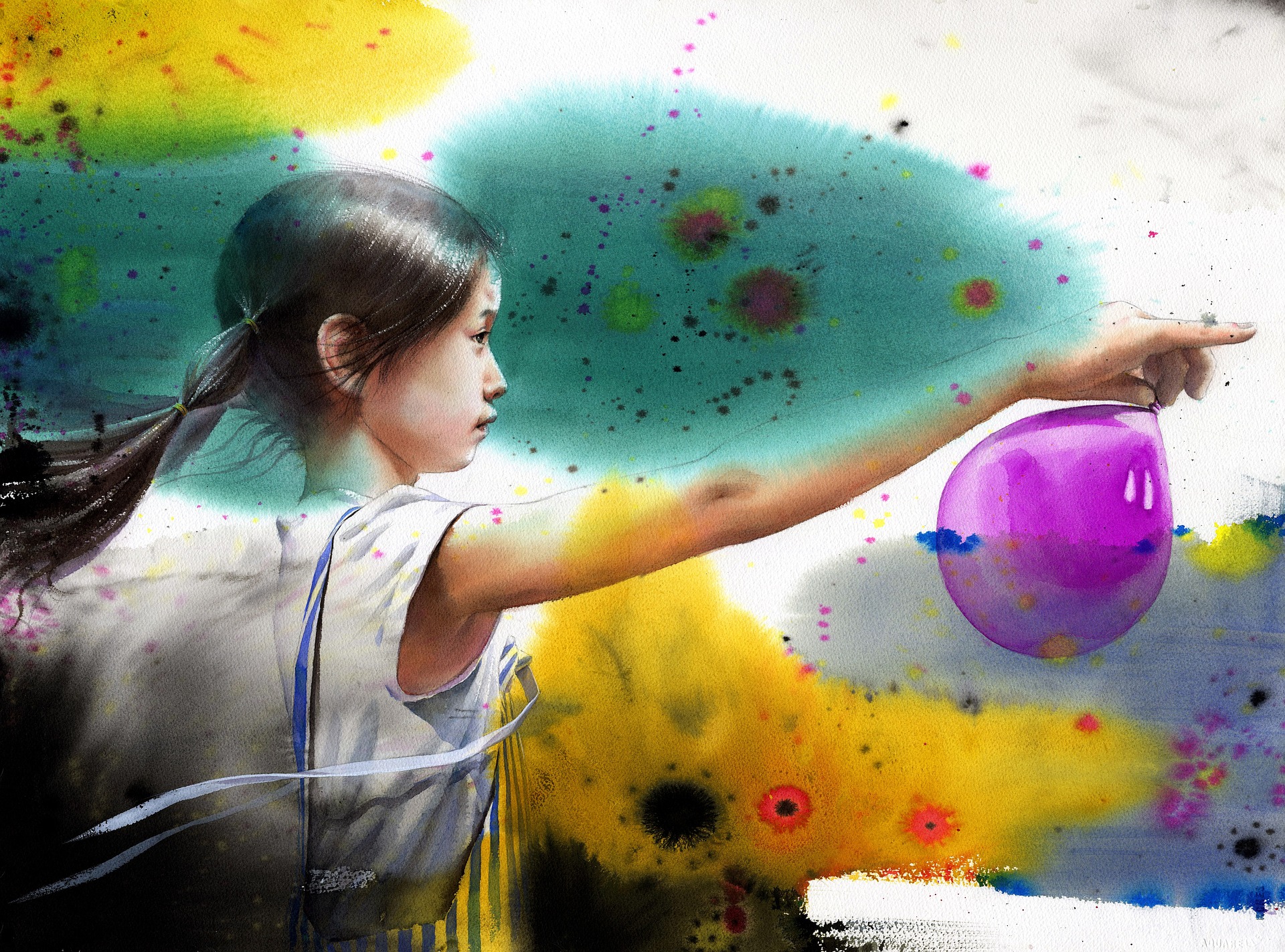How can a systems perspective help you feel more centered? Stepping into a wider viewpoint helps you stay more grounded in the presence of people whose opinions are totally opposite to your own. If you don’t think you know what looking at something as part of a system is, please relax. I know you do. You probably just don’t think of it as such.
I began this series asking you to consider what life would be like if there were no right and no wrong. In Article Two, you reflected on the notion that all viewpoints are valid, but not accurate. To review, this is because the view that is seen from any point on the surrounding circle of possible perspectives is all that can be seen. What you see will change from position to position. This is due to your shifting the angle from which you’re viewing the situation or circumstance.
In this article, you’re going to contemplate the additional liberating perspective that all viewpoints are not only valid, they are also incomplete. But first, let’s explore exactly what viewing a situation as part of a larger system actually entails.
What Is Systems Thinking (Without Getting Too Intellectual About It)
Stepping into a view of a larger picture involves consciously stepping into an often unfamiliar concept.
For example, have you ever thought about the system that produces that luscious, beautiful, enticing plate of fettuccine in front of you at dinner? It took the farmers who grew the wheat; the millers to grind the wheat into flour; the cook to mix all the ingredients that make up the pasta dough; the manufacturer of the machine that makes it into fettuccine noodles or the skills of the cook; the company that delivers it to the packager, who got all their materials to package the noodles in a way that makes them viable for storage and delivery to a store; where you can finally buy them and plan to prepare your wonderful mean for those you love (or just for yourself).
fettuccine in front of you at dinner? It took the farmers who grew the wheat; the millers to grind the wheat into flour; the cook to mix all the ingredients that make up the pasta dough; the manufacturer of the machine that makes it into fettuccine noodles or the skills of the cook; the company that delivers it to the packager, who got all their materials to package the noodles in a way that makes them viable for storage and delivery to a store; where you can finally buy them and plan to prepare your wonderful mean for those you love (or just for yourself).
Each one of these steps is a part of the whole picture that eventually sits on your dinner plate or in your bowl.
The Benefits Of Seeing The Larger Picture
Approaching problems and thinking about them as if they are existing within a larger system engenders easy access to gratitude that we moderns often overlook. The ability to see this and embrace it entails the following minimal skills:
- Freedom to focus on the reality of a bigger picture and not just a single element of that picture
- Awareness that there actually exists a wider context to pay attention to (the larger picture)
- An appreciation for the reality of undeniable interactions among the different components making up the whole picture. This reflects the reality of any single viewpoint being free to exist by itself as if it were the whole picture
 It’s unfamiliar to remember everything in existence is always a part of some system that is larger than the issue at hand. But this remembrance makes it easier to see your own viewpoint more clearly.
It’s unfamiliar to remember everything in existence is always a part of some system that is larger than the issue at hand. But this remembrance makes it easier to see your own viewpoint more clearly.
And then, to release it as the ‘truth’ and the ‘right’ point of view. And by releasing it, I mean letting go of the emotional investment that keeps it feeling and looking like the only ‘right’ viewpoint.
With this simple understanding of a different way to fashion your viewpoint, let’s take a look at the second perspective I promised to share.
Perspective 2: All Viewpoints Are Incomplete
This leads us to understand that all viewpoints, though valid, must also be incomplete. A single viewpoint, by definition, must be incomplete by virtue of the fact that it is the view from only one point on the circle that holds many possible viewpoints.
Thus, it leaves out all other information about what it looks like from the other points on the circle.

This is why the flexibility of viewpoint is essential.
It is empowering and incredibly useful.
Without this flexibility of viewpoint you will:
- Find it difficult, if not almost impossible, to step out of the conviction that you are right and the other is wrong
- Experience yourself tenaciously clinging to having to be right and being unwilling to be wrong
- Unequivocably lose your freedom to move your point of view all the way around the circle
Don’t Let Hidden Modes of Thought Steal Away Your Center & Presence
Differing points of view rest on differing assumptions and expectations. It is prudent to discover what those differing assumptions and expectations are. AND to understand that all of those different points of view compose an entire system of possible viewpoints. Approaching this challenge of daily life is made much easier when you understand and fashion your approach to these differences from a more flexible way of thinking.
For example, did you ever get frustrated with your partner or a friend who said they’d clean up the kitchen after a party? They said they did so, but when you walked into the kitchen, it was definitely not cleaned up, according to your standards. They might have left a pot to soak in the sink, or folded up wet dishtowels and left them sitting, or neglected to wipe the crumbs that spilled from the Apple Betty dessert all over the counter.
party? They said they did so, but when you walked into the kitchen, it was definitely not cleaned up, according to your standards. They might have left a pot to soak in the sink, or folded up wet dishtowels and left them sitting, or neglected to wipe the crumbs that spilled from the Apple Betty dessert all over the counter.
Your expectations for a cleaned-up kitchen were not met. However, a clean kitchen seen from the viewpoint of your partner or friend could be very different from yours. To them, a clean kitchen might only include dishes in the dishwasher. Or pots left to soak so they could be more easily scrubbed clean the next morning. And just maybe, their actual vision isn’t so good and they didn’t see the crumbs!
Whose picture is right? Is the other wrong? This is the stuff of which arguments are made. The solution rests in the perspective that both might actually be valid viewpoints, yet each remains incomplete on its own. Doesn’t this view open the door to creating an effective and mutual compromise?
Your Own Polarization, Thinking, & Freedom
Take a moment and identify where you feel you have been unconsciously polarizing. Those places where you’re taking a stance. Those times when you’re convinced there is one right way to move forward. And it’s backed up by an unwillingness or inability to allow another’s point of view that is totally opposite to yours.
Remember, the point here is NOT to give up our viewpoint. It’s to temper it with a deeper understanding that it, like the others, is both valid and incomplete.
 Give it a try. Experience how it can shift your emotional turmoil toward greater equanimity. Emotional balance is the key to embracing the notion of humanity as one family. This is the first step toward finding how a systems perspective could enable us to finally transform the notion of one humanity into a workable reality.
Give it a try. Experience how it can shift your emotional turmoil toward greater equanimity. Emotional balance is the key to embracing the notion of humanity as one family. This is the first step toward finding how a systems perspective could enable us to finally transform the notion of one humanity into a workable reality.
Expectations based on a single viewpoint give birth to right and wrong.
Without any awareness of this, you remain imprisoned
by your own point of view.
Awareness & Attention Are Imperative
When you consciously pay attention to the rigidity or flexibility of your viewpoint, you can flex your awareness muscles any time you wish. Then you have what you need to let the arguing dissolve and the emotional charge around your personal polarization decrease. This frees you to continue with your agenda but from a place more solidly based on presence, mindfulness, and actually being centered within yourself.
And, you can use your freed-up attention and awareness to explore the other’s way of viewing whatever you’re at odds about.
You can explore each different way of seeing the object of contention. You can discover how brushing an unfamiliar viewpoint over a situation will color how you perceive it.
Doing this without making any single perspective right and all others wrong will lead you to:
- Deeper insights into the ‘why’ others are perceiving things differently, and thus why they think and feel as they do
- A deeper understanding of how a point of view can become fixated, inflexible, stuck, and incapable of moving
- Awareness of multiple viewpoints and greater access to creative and harmonious ways to work together and dissolve disputes
- Greater acceptance of differences in viewpoints, with a new awareness of the strengths and weaknesses of each
- Freedom to stand firm in your own point of view
- An openness to the input of other perspectives as valuable and potentially useful
Freeing? Yes! Annoying? Sure can be!
 Tips For Holding Your Viewpoint As Being Both Valid & Incomplete
Tips For Holding Your Viewpoint As Being Both Valid & Incomplete
This image is a valid depiction of a human being because you can clearly see it is a human being. But it is also clearly incomplete.
- This way of honoring points of view is a skill to develop. So stay calm when you realize how attached you are to a lot of your viewpoints.
- The point here is not to give up your viewpoint as yours. It is to expand your ability to hold multiple viewpoints (including your own) as both valid and incomplete.
- Relax when you realize you not only can’t detach from a viewpoint but that you don’t want to. This is a true characteristic of being a human being. You’re normal. So nothing to feel bad about.
- You may find yourself resisting the release of a cherished point of view. Give yourself time to gently and kindly explore your ‘no’. There are valid reasons for this. And you have to address these. Because this is essential before any real change in perspective can happen.
- Alert: this is all about discovering how to have the maximum amount of flexibility and happiness in your life. It’s not about being right.
Come back again to read the final post in this series. It will take you one step closer to a deeper and wider understanding of how we humans work. And will include the larger picture we need to discover and learn how to navigate.
Much love,
Ragini
***All Pictures courtesy of www.Pixabay.com







Leave a Reply